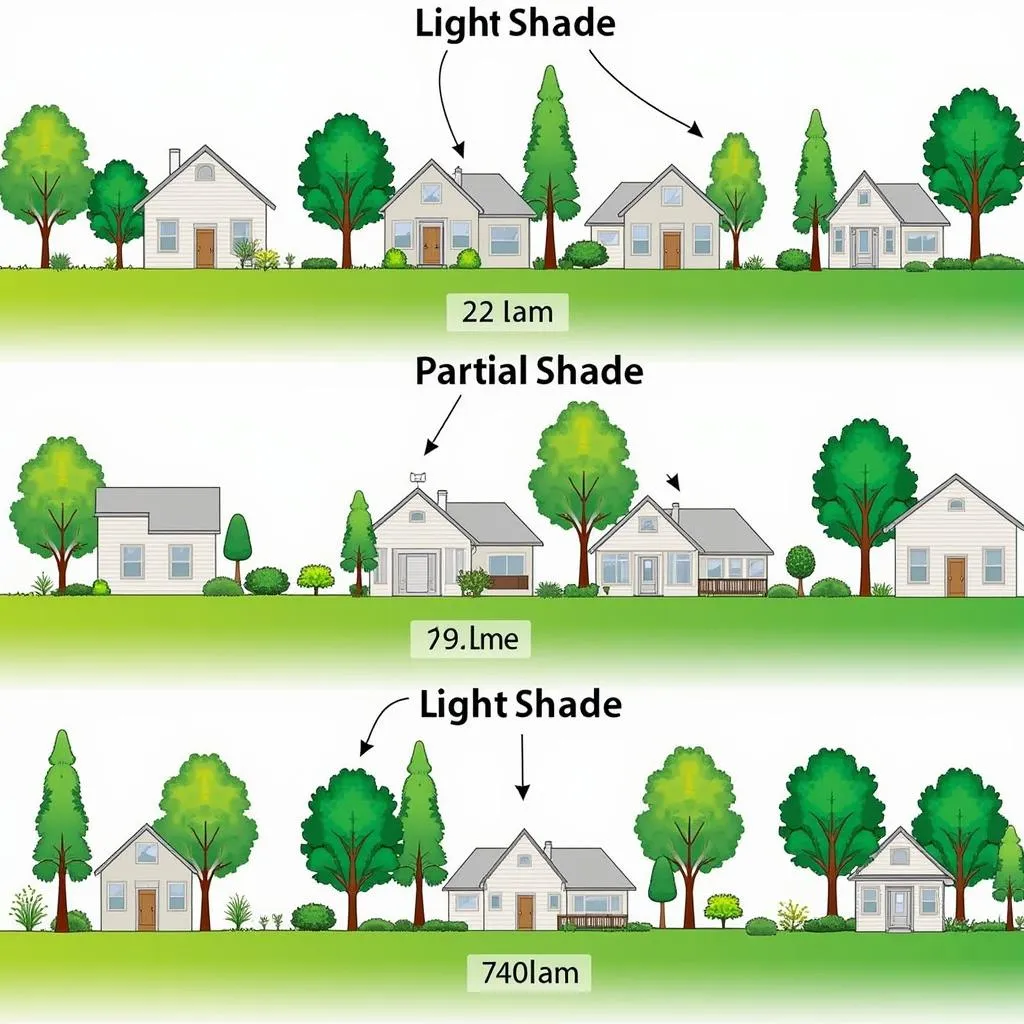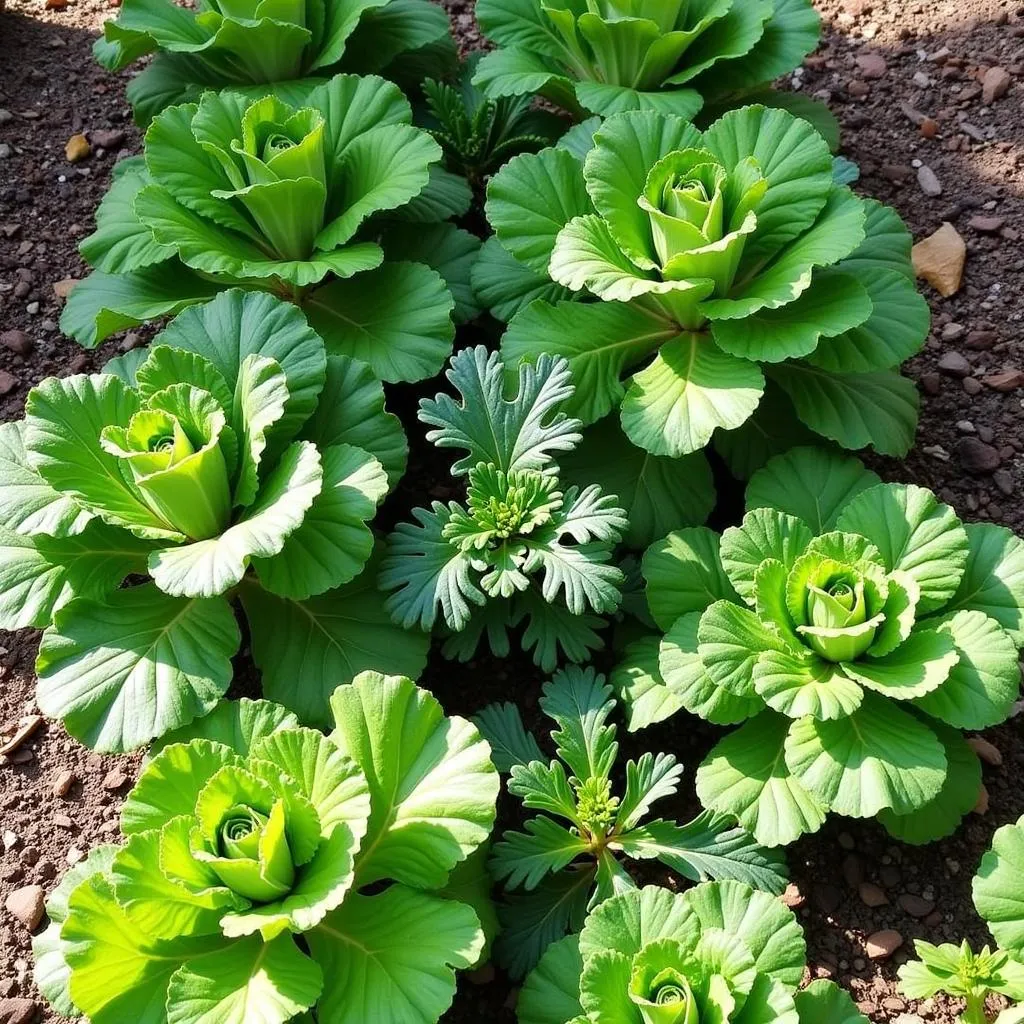Gardening in the shade can seem like a daunting task, especially when it comes to food plots. Many edible plants thrive in full sun, leaving those with shady yards wondering what to grow. But fear not, fellow shade dwellers! With a little planning and the right plant choices, you can create a thriving food plot even in low-light conditions. This guide will equip you with all the knowledge you need to successfully cultivate delicious edibles in your shaded haven.
Understanding Shade and Its Impact on Plants
Before diving into plant selection, it’s crucial to understand the different types of shade and how they affect plant growth.
- Full Shade: Areas receiving less than 4 hours of direct sunlight per day, typically found under dense tree canopies or behind north-facing walls.
- Partial Shade: Areas receiving 4-6 hours of direct sunlight per day, often dappled or filtered light.
- Light Shade: Areas receiving 6-8 hours of sunlight with some shade during the hottest part of the day.
Each level of shade affects the amount of light intensity and duration, influencing a plant’s ability to photosynthesize and grow.
 Different Shade Patterns in a Garden
Different Shade Patterns in a Garden
Choosing the Right Plants for Your Shady Food Plot
The key to successful food plots in shaded areas lies in selecting plants that are naturally adapted to lower light conditions. Here are some top picks:
Leafy Greens:
- Lettuce: Thrives in cool, shady spots and offers a variety of textures and flavors.
- Spinach: A nutritional powerhouse that can tolerate partial shade, especially in warmer climates.
- Kale: A hardy green that can handle some shade and offers a long harvest season.
- Arugula: A peppery green that adds a kick to salads and prefers partial shade.
 Lush Leafy Greens Growing Abundantly in a Shaded Garden
Lush Leafy Greens Growing Abundantly in a Shaded Garden
Root Vegetables:
- Carrots: While they prefer full sun, carrots can still produce a decent crop in partial shade. Opt for shorter varieties.
- Radishes: Fast-growing and shade-tolerant, radishes add a spicy crunch to salads.
- Beets: Both the roots and greens are edible and can tolerate some shade.
Other Vegetables:
- Broccoli: Prefers partial shade, especially in hot climates, to prevent bolting.
- Cauliflower: Similar to broccoli, cauliflower benefits from some protection from the afternoon sun.
- Peas: These cool-season climbers can handle partial shade and add vertical interest to the garden.
Herbs:
- Mint: A vigorous grower that prefers shade and moist soil.
- Parsley: This versatile herb tolerates shade well and provides fresh flavor all season long.
- Cilantro: A fast-growing herb that prefers cool, shady spots.
- Chives: These perennial herbs thrive in partial shade and add a mild onion flavor to dishes.
Tips for Success
- Amend the Soil: Shade-tolerant plants often compete with trees and shrubs for nutrients and moisture. Amend the soil with compost and organic matter to improve drainage, water retention, and fertility.
- Water Wisely: Shady areas tend to dry out more slowly than sunny ones. Water deeply but less frequently, ensuring the soil is moist but not waterlogged.
- Mulch Around Plants: A layer of organic mulch helps retain moisture, suppress weeds, and regulate soil temperature, creating a more favorable environment for your plants.
- Consider Succession Planting: Maximize your yield by planting quick-maturing crops like radishes and lettuce between slower-growing vegetables like broccoli and cauliflower.
- Provide Support: Vining crops like peas and beans will need a trellis or other support structure to climb, especially in shady areas where they may stretch for light.
Expert Insights
“Don’t be afraid to experiment with different varieties to see what performs best in your specific shade conditions,” advises master gardener, Emily Carter. “Remember, even within a single plant species, some cultivars may be more shade-tolerant than others.”
Conclusion
Creating a thriving food plot in a shaded area is achievable with the right knowledge and approach. By understanding the dynamics of shade, selecting suitable plants, and implementing proper gardening techniques, you can enjoy a bountiful harvest of fresh, homegrown produce right from your very own shady sanctuary.
FAQs about Food Plots for Shaded Areas
1. Can I grow tomatoes in the shade?
While tomatoes prefer full sun, you can still grow some varieties in partial shade. Look for compact, determinate varieties that are known to produce well in lower light conditions.
2. How do I know if my soil is suitable for shade-loving plants?
Conduct a soil test to determine its pH and nutrient levels. Most shade-tolerant edibles prefer slightly acidic to neutral soil (pH 6.0-7.0).
3. Do I need to fertilize my shade garden differently?
Yes, shade-loving plants often benefit from a fertilizer that’s lower in nitrogen and higher in phosphorus and potassium.
4. What are some common pests and diseases to watch out for in shaded gardens?
Slugs, snails, and fungal diseases can be more prevalent in shady areas due to the increased moisture.
5. Can I start seeds directly in my shaded garden?
Some seeds, like lettuce and radishes, can be directly sown in the garden. However, others, like broccoli and cauliflower, may benefit from starting indoors under grow lights to give them a head start.
Need Help with Your Shaded Food Plot?
Our team at Mina Cones Food is here to help! Contact us at Phone Number: 02437655121, Email: minacones@gmail.com or visit us at 3PGH+8R9, ĐT70A, thôn Trung, Bắc Từ Liêm, Hà Nội, Việt Nam. We have a 24/7 customer support team ready to assist you.